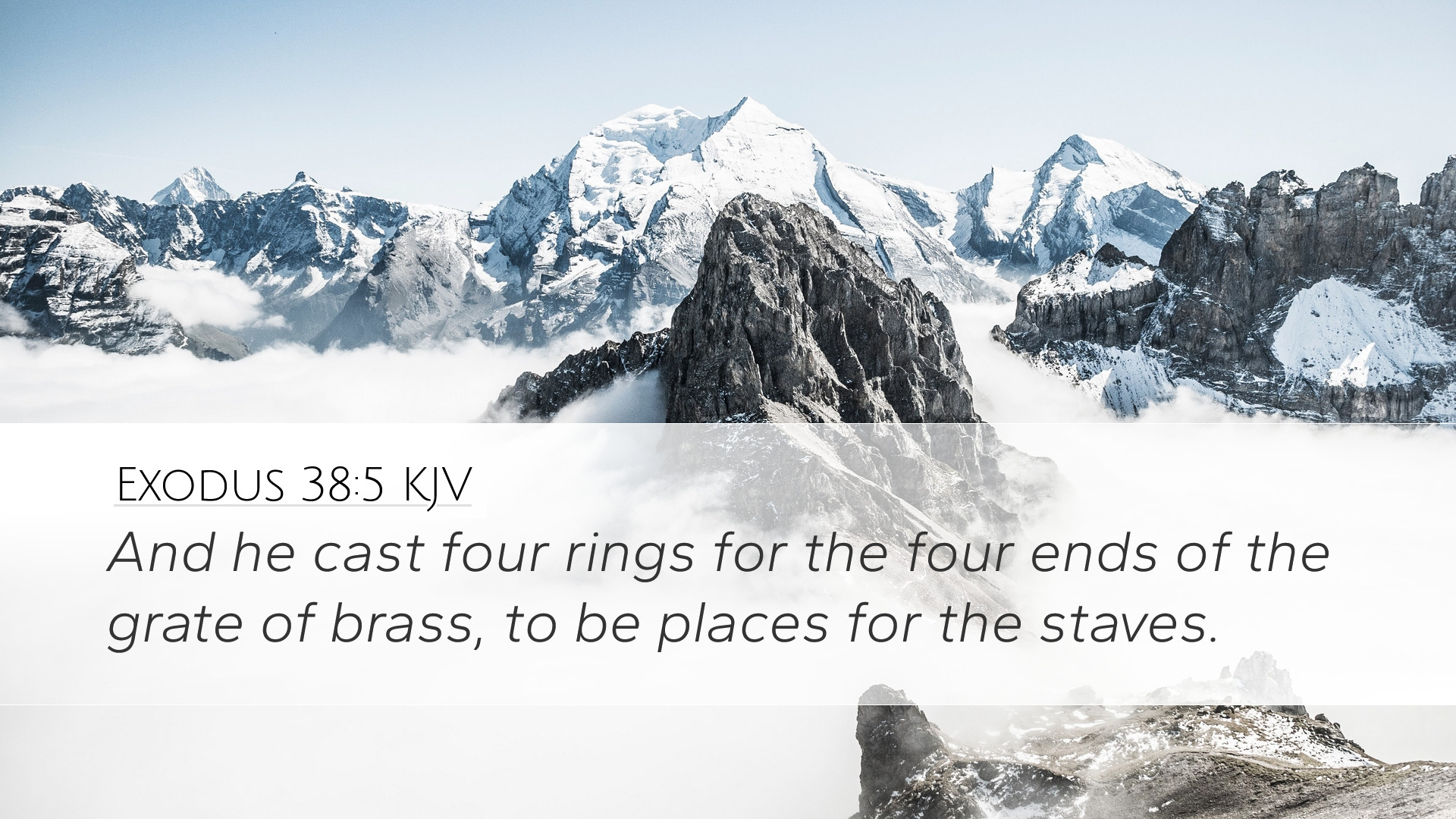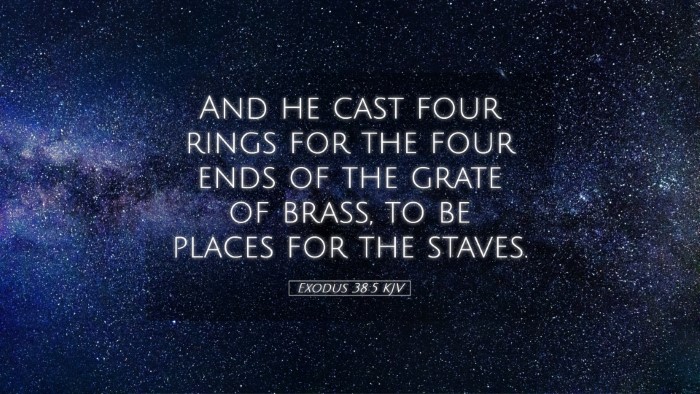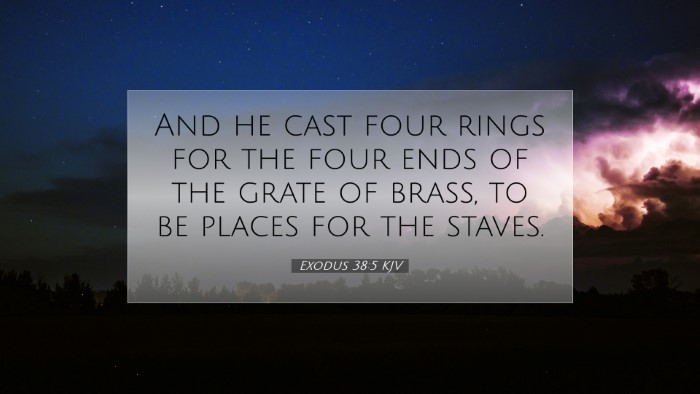Commentary on Exodus 38:5
Verse: Exodus 38:5 - "And he cast four rings for the four corners of the brazen grate, a ring for every corner; and the rings were for places for the staves."
Introduction
The construction of the tabernacle as described in Exodus is rich in symbolism and instruction for both theological understanding and practical application. Exodus 38:5 focuses on the brazen altar, a central element in the sacrificial system of ancient Israel. This verse highlights the structural details that offer insights into God’s design for worship and communion with His people.
Significance of the Brazen Altar
The brazen altar represents God's provision for atonement and the means by which sinners approach Him. It symbolizes the ultimate sacrifice made by Christ, as the altar was continually used for sacrificial offerings. Each detail in its construction points to deeper truths about redemption and holiness.
Matthew Henry's Insights
Matthew Henry emphasizes the importance of the brazen altar as a place of sacrifice and how it reflects the seriousness of sin and the necessity for atonement. He notes that the rings were designed for staves to facilitate the altar's movement, illustrating the transient nature of the Israelites' journey and the need for continual sacrifice.
- Mobility: The ability to transport the altar signifies that worship must be mobile and adaptable, reflecting the changing circumstances of the Israelites as they wandered in the wilderness.
- Accessibility: The accessibility of the altar is also emphasized; it was meant for all, reinforcing the theme that God desires to meet with His people.
Albert Barnes' Perspective
Albert Barnes provides an analytical approach to the materials and dimensions of the altar. He details the significance of the bronze used—a reflection of judgment and trial—contrasting with the gold of the Holy of Holies, which represents divine glory.
- Materials: He points out that bronze is indicative of the altar’s function; it is often associated with sin and judgment, a necessary element for cleansing.
- Design: The design of the rings and staves suggests stability amidst the mobile nature of worship in the wilderness, emphasizing that while the physical structure can move, the principles of worship remain constant.
Adam Clarke's Commentary
Adam Clarke elucidates the practical implications of having rings for staves. He interprets the rings as a symbol of God’s binding promise to His people. In Clarke’s view, the structure signifies that while God is a God of order, His ways often transcend human understanding.
- Divine Order: The provision of rings signifies God’s order in worship; nothing is arbitrary in divine worship, and every detail carries meaning.
- Spiritual Movement: Clarke also reflects on the spiritual movement of God's people; just as the altar was mobile, believers are on a spiritual journey, continually seeking to draw nearer to God.
Theological Implications
This verse emphasizes several theological truths about the nature of worship and atonement:
- God's Holiness: The brazen altar was a reminder that God is holy, and access to Him requires a sacrifice.
- Human Sinfulness: The necessity of a continual sacrificial system underscores the depth of human sin and the need for redemption.
- Access to God: The rings symbolize access; God desires a relationship with His people that necessitates sacrifice but also offers an invitation to approach Him.
Application for Pastors and Theologians
For pastoral reflection, this verse invites leaders to consider how they facilitate worship in their congregations:
- Accessibility of Worship: Just as the altar was made accessible, worship settings should reflect openness to God and approachability for all congregants.
- Teaching About Sacrifice: Understanding the significance of sacrifice helps congregations value the cost of grace and the necessity of repentance.
- Mobility in Ministry: Embracing the transient nature of ministry can foster adaptability and readiness to respond to God's leading.
Conclusion
Exodus 38:5, while detailing a specific aspect of the brazen altar, encapsulates profound truths necessary for understanding worship and sacrifice in the Old Testament. Whether viewed as a historical account or a theological declaration, this verse invites rich exploration into the nature of God’s relationship with humanity through the lens of sacrificial love.


